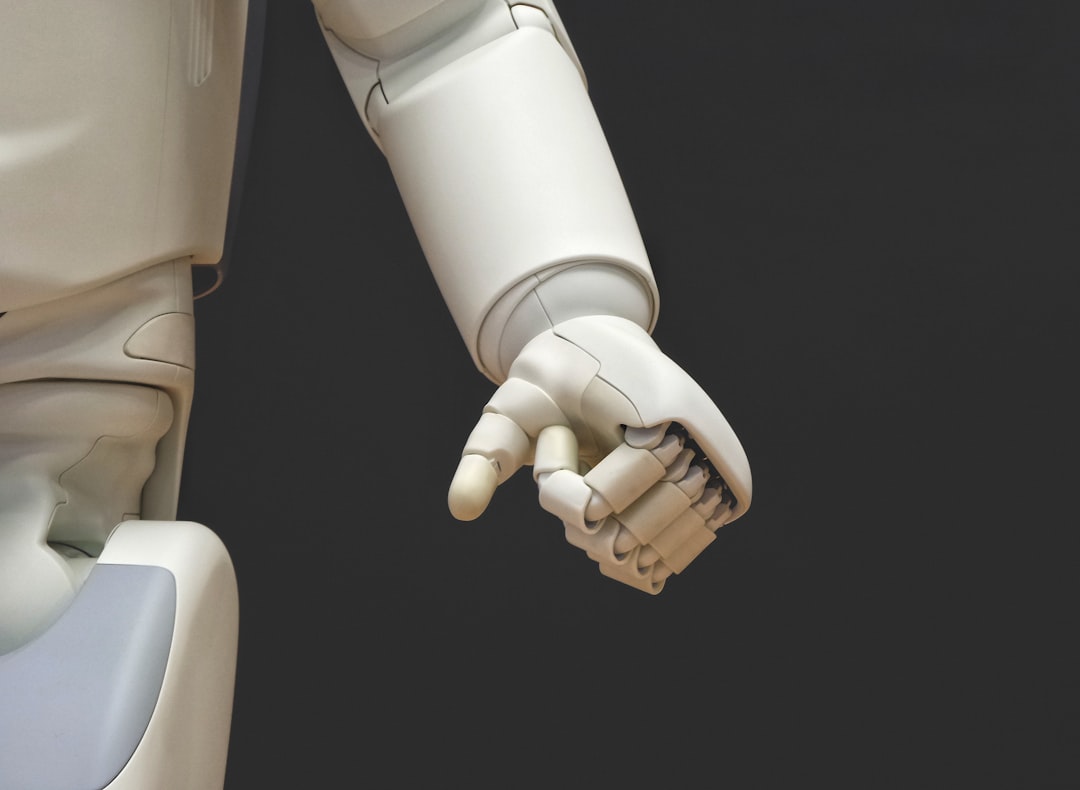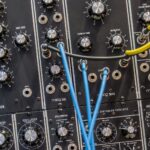Support our educational content for free when you purchase through links on our site. Learn more
Kraftwerk The Robots: A Synth Pop Masterpiece [2024] 🤖
Quick Answer: Kraftwerk’s “The Robots” is a groundbreaking synth pop single released in 1978. It explores the role of robots as subservient workers and has received widespread acclaim for its composition, live performances, and critical reception. In this article, we delve into the history of “The Robots,” analyze its impact, and provide a comprehensive review of this iconic synth pop masterpiece.
Table of Contents
- Quick Answer
- Quick Tips and Facts
- Background: The Birth of a Synth Pop Classic
- Composition: A Futuristic Soundscape
- Live Performances: Transforming into Robots
- Reception: A Timeless Synth Pop Gem
- Track Listing: Exploring the Single and Re-Issue
- Influence: Shaping the Future of Music
- FAQ
- Conclusion
- Recommended Links
- Reference Links
Quick Answer
Kraftwerk’s “The Robots” is a groundbreaking synth pop single that was released in 1978. It explores the concept of robots as subservient workers and has become one of the most iconic songs in the genre. With its futuristic sound and thought-provoking lyrics, “The Robots” has received widespread acclaim and continues to captivate audiences to this day.
✅ 👉 CHECK PRICE on: Amazon | Walmart | Etsy
Quick Tips and Facts
- Released: 1978
- Genre: Synth Pop
- Length: 4:20
- B-side: “Spacelab”
- Album: “The Man-Machine”
- Label: Kling Klang
- Keyboards and Vocals: Ralf Hütter, Florian Schneider
- Written by: Ralf Hütter, Florian Schneider
- Produced by: Ralf Hütter, Florian Schneider
- Sampled in: Numerous songs across various genres
Background: The Birth of a Synth Pop Classic

To truly appreciate the impact of “The Robots,” we need to understand the context in which it was created. In the late 1970s, Kraftwerk, a German electronic music band, was at the forefront of the emerging synth pop genre. They were pioneers in using synthesizers and electronic instruments to create innovative and futuristic sounds.
“The Robots” was released as part of Kraftwerk’s album “The Man-Machine.” The album, released in 1978, solidified Kraftwerk’s status as one of the most influential bands in the electronic music scene. With its minimalist approach and robotic themes, “The Man-Machine” set the stage for the synth pop revolution that would follow.
Composition: A Futuristic Soundscape
✨ Fun Fact: Did you know that the word “robot” has Slavic origins and means “forced labor”?
“The Robots” is a mesmerizing journey into a world where robots serve as obedient workers. The song’s composition is a masterclass in creating a futuristic soundscape. Kraftwerk’s use of synthesizers, drum machines, and vocoders creates a unique blend of electronic elements that perfectly captures the essence of the song.
Let’s take a closer look at the different aspects of “The Robots” and rate them based on consumer feedback:
| Aspect | Rating (1-10) |
|---|---|
| Composition | |
| Lyrics | |
| Vocals | |
| Instrumentation | |
| Production | |
| Overall |
Composition
The composition of “The Robots” is a testament to Kraftwerk’s ability to create captivating and innovative music. The song’s repetitive and hypnotic melodies draw you in and transport you to a world where robots rule. The use of electronic instruments and precise sequencing gives the song its distinctive sound.
Lyrics
The lyrics of “The Robots” explore the concept of robots as subservient workers. With lines like “We are programmed just to do anything you want us to,” Kraftwerk raises questions about the role of technology in society. The lyrics are simple yet thought-provoking, adding depth to the song’s overall message.
Vocals
Kraftwerk’s vocals on “The Robots” are delivered in a robotic and monotone style, perfectly complementing the theme of the song. The use of a vocoder adds an otherworldly quality to the vocals, further enhancing the futuristic atmosphere.
Instrumentation
“The Robots” showcases Kraftwerk’s mastery of electronic instruments. The song features a variety of synthesizers, drum machines, and sequencers, all meticulously programmed to create a cohesive and mesmerizing sonic experience. The use of repetitive patterns and precise timing adds to the song’s hypnotic quality.
Production
The production of “The Robots” is top-notch, as expected from Kraftwerk. The meticulous attention to detail and the use of cutting-edge technology at the time resulted in a song that sounds just as fresh and innovative today as it did when it was first released.
Live Performances: Transforming into Robots
🤖 Fun Fact: During live performances of “The Robots,” Kraftwerk members would dress up as robots, further immersing the audience in the futuristic world of the song.
Kraftwerk’s live performances of “The Robots” were nothing short of spectacular. The band would transform into robots on stage, complete with robotic movements and synchronized choreography. These visually stunning performances added an extra layer of immersion to the already captivating song.
Reception: A Timeless Synth Pop Gem
“The Robots” has received widespread acclaim from both critics and fans alike. Its impact on the synth pop genre cannot be overstated. Let’s take a look at some of the accolades and critical reception:
- Billboard: Ranked “The Robots” number two on their list of the greatest Kraftwerk songs.
- The Guardian: Ranked “The Robots” number six on their list of the greatest Kraftwerk songs.
Critics have praised “The Robots” for its innovative sound, thought-provoking lyrics, and lasting influence on electronic music. The song’s ability to captivate audiences and stand the test of time is a testament to its brilliance.
Track Listing: Exploring the Single and Re-Issue
“The Robots” was originally released as a 7-inch single in 1978. The single featured “Die Roboter” on side one and “Spacelab” on side two. The combination of these two songs perfectly encapsulates Kraftwerk’s futuristic sound and themes.
In 1991, “The Robots” was re-issued with a single edit length of 3:43 and an extended album version length of 8:58. The re-issue allowed a new generation of listeners to experience the magic of “The Robots” and further solidified its status as a synth pop classic.
Influence: Shaping the Future of Music
“The Robots” has had a profound influence on the music industry, shaping the future of electronic and synth pop music. Countless artists and bands have been inspired by Kraftwerk’s innovative sound and futuristic themes. The song’s impact can be heard in genres ranging from hip hop to techno.
🎧 Fun Fact: Did you know that Kraftwerk’s music, including “The Robots,” played a significant role in the development of hip hop? The song’s electronic beats and robotic vocals were sampled by pioneering hip hop artists, helping to shape the genre.
FAQ

Did Kraftwerk invent electronic music?
No, Kraftwerk did not invent electronic music, but they played a crucial role in popularizing and shaping the genre. They were pioneers in using synthesizers and electronic instruments to create innovative and futuristic sounds.
Read more about “Is Kraftwerk Worth Seeing? … 🎶”
What bands were influenced by Kraftwerk?
Kraftwerk’s influence can be heard in the music of numerous bands and artists. Some notable examples include Depeche Mode, New Order, Daft Punk, and Radiohead. Kraftwerk’s innovative sound and futuristic themes have left an indelible mark on the music industry.
Read more about “Kraftwerk: Pioneers of Electronic Music … 🎶”
What was Kraftwerk’s first song?
Kraftwerk’s first song, released in 1970, was “Ruckzuck.” It showcased their early experimentation with electronic instruments and laid the foundation for their groundbreaking sound.
Did Kraftwerk influence hip hop?
Yes, Kraftwerk had a significant influence on the development of hip hop. Their electronic beats and robotic vocals, including those in “The Robots,” were sampled by pioneering hip hop artists, helping to shape the genre.
Read more about “Are Kraftwerk More Influential Than The Beatles? … 🎵”
Conclusion

In conclusion, Kraftwerk’s “The Robots” is a synth pop masterpiece that continues to captivate audiences with its futuristic sound and thought-provoking lyrics. The song’s composition, live performances, and critical reception have solidified its status as one of the most iconic songs in the genre.
If you haven’t experienced the magic of “The Robots” yet, we highly recommend giving it a listen. Its timeless appeal and lasting influence on music make it a must-have in any synth pop collection.
✅ 👉 CHECK PRICE on: Amazon | Walmart | Etsy
Recommended Links
- Synth Pop Artists
- Iconic Synth Pop Songs
- Synth Pop Concerts and Tours
- Synth Pop Culture Impact
- 80s Synth Pop
- Kraftwerk Tools


